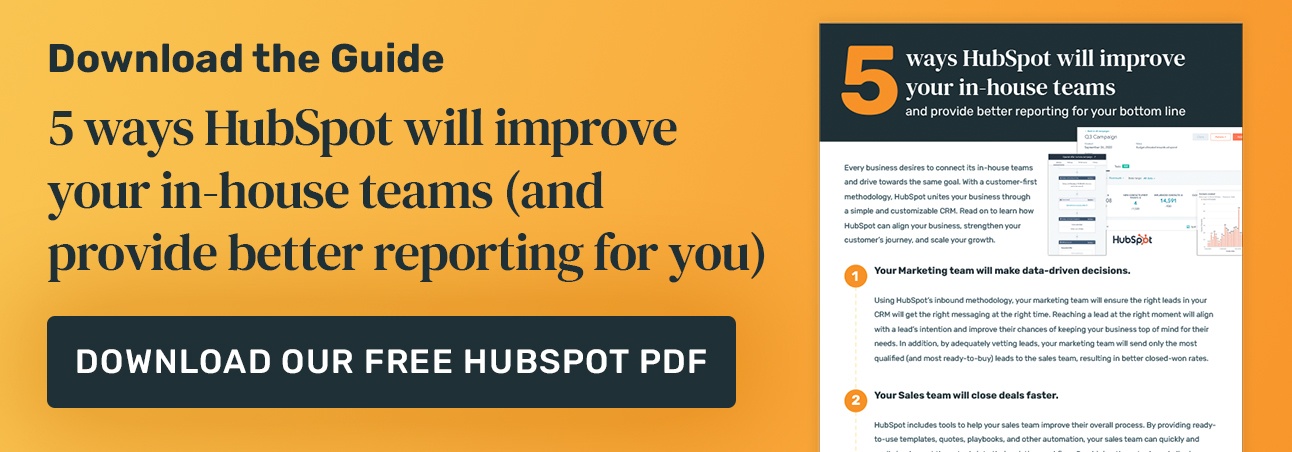How to properly use lifecycle stages in HubSpot

Now that you understand lifecycle stages, the next step is learning how to properly use them. Are you looking to streamline your lead management process and improve your sales and marketing efforts in HubSpot? Do you want to learn how to leverage lifecycle stages to maximize your conversions? Do you need HubSpot marketing tips? Then you're in the right place!
In this blog post, we will guide you through the ins and outs of properly using lifecycle stages in HubSpot.
Whether you're a seasoned user or just getting started, this post will equip you with the knowledge and tools to optimize your lead management process and drive better results.
HubSpot is a leading name synonymous with modern sales and inbound marketing campaigns. The platform's advanced marketing capabilities support teams with granular lead and customer management for optimizing each stage of the buyer’s journey.
The HubSpot CRM streamlines the buyer journey from the beginning by automatically tagging each contact and company based on the acquisition method and its relationship to your business.
HubSpot’s built-in lifecycle stage property can prove advantageous for your business processes with a systematic approach. With the lifecycle stages in order, your team can look forward to accurately tracking contact/company status while rallying sales and marketing teams toward increased conversion rates and revenue.
Defining lifecycles in HubSpot
HubSpot's lifecycle stages are designed to help businesses organize and track leads as they move through the various stages of the sales funnel.
While lifecycles seem similar to your lead status, they have different functions. Your lead status refers to the sub-stages of a sales-qualified lead (SQL) journey through the purchase funnel. Lifecycles represent the overall steps involved from the initial contact right up to closing the deal. With HubSpot lifecycle, you can effectively provide prospects with specific needs based on their stage in the journey.
Setting up and customizing HubSpot lifecycle stage properties

The first step in implementing lifecycle stages in HubSpot is to create custom contact properties for each stage. This will allow you to track a lead's progression through the funnel and segment your contacts based on their stage.
You can create your lifecycle stages by logging into your account, clicking on settings, and selecting objects. Click contacts from the drop-down and you can start adding and naming stages via the lifecycle stage tab.
HubSpot provides eight default lifecycle stages to help you manage your business processes. These include:
Subscribers |
Contacts or companies that have agreed to any form of marketing communication from your company. |
Leads |
Contacts or companies that have indicated an interest in your offerings via site visits or signing up for a CTA. |
Marketing qualified lead (MQL) |
Leads that have shown interest in marketing content and might want to learn more about your brand offerings. |
Sales qualified lead (SQL) |
MQLs that have shown interest in taking further steps toward making a purchase, such as requesting a discovery call. |
Opportunity |
Any contact or company connected with a deal. |
Customer |
Contacts or customers with at least one closed deal. |
Evangelist |
Customers who have become brand ambassadors, advocating for your company and offerings. |
Other |
Contacts that don’t fall into any of the other categories. |
Most businesses use these default lifecycle stages right out of the box, though they might not fit other businesses. For instance, a B2B SaaS company might use terminology like "user" or "product qualified lead (PQL)" to accurately represent their buyers journey. It may be beneficial to work with your internal team to map out and agree on your lifecycle stages before making any updates.
Users with super admin permission can customize the default lifecycle stages if they wish to include unique contact or company roles in their business processes. You can easily add a custom property value to your contact/company management without fuss. By doing so, you'll be able to see at a glance where each contact is in the buying process and tailor your messaging accordingly.
Segmenting and targeting your marketing campaigns based on lifecycle stages
Once you've set up your lifecycle stage properties, the next step is to create lists and segments based on those stages. When it comes to the top HubSpot marketing tips, segmentation and targeting remain a priority for most companies. A clear understanding of the needs, expectations, and challenges of contacts through organized segments enables your brand to consistently provide winning services and products for optimal customer engagement and loyalty.
Segmenting your contacts gives you the opportunity to create targeted campaigns and workflows that are specific to each stage. For example, you might create a list of all your "Marketing Qualified Leads" and send them a targeted email campaign designed to move them further down the funnel. Or, you might create a segment of "Customers" and send them a post-purchase survey to gather feedback and improve your product or service.
HubSpot lifecycle stages make it frictionless to deliver the necessary deliverables to your leads for the best impact. Specifically, you can review how prospects react to your marketing and sales engines to streamline lead generation.
Through the lifecycle property, you can assess and personalize marketing content based on the best method of engaging your prospects (e.g., location, device, or referral source). Consider combining HubSpot lifecycle stages and lead status for comprehensive lead management that lets you record first contact and track purchase intent without missing a beat.
Setting up workflows and automation for HubSpot lifecycle stages
Finally, you can use workflows to automate lifecycle stage transitions based on specific actions a lead or customer takes. This will ensure that you're always providing the most relevant content and messaging based on where someone is in the buying process.
Automating the workflow of your lifecycles optimizes its efficiency. You can set up a lifecycle workflow via the automation tab in your HubSpot account. By doing so, you can choose to either create a contact or company-based workflow. You can set enrollment triggers so that HubSpot automatically makes records in a workflow according to preset criteria.
For example, you might set up a workflow that automatically moves a lead from "Subscriber" to "Lead" when they download a gated piece of content. Or, you might set up a workflow that moves a "Sales Qualified Lead" to "Customer" when they make a purchase. HubSpot allows you to review your workflow setups before finalizing them, providing a seamless process that minimizes error.
By automating these transitions, you'll be able to focus on creating great content and providing a great customer experience, while HubSpot takes care of moving leads and customers through the funnel.

Closing thoughts—optimize your HubSpot experience
HubSpot specialists understand that there’s no one-size-fits-all approach to digital marketing and sales. The lifecycle stages prove this through its availability of dynamic features for categorizing your contacts and companies.
Implementing a lifecycle strategy in HubSpot can have a significant impact on your inbound marketing efforts. Understanding each stage and tailoring your outreach accordingly can help you create a more personalized and effective experience for your leads and customers. By implementing these strategies, you'll be well on your way to creating a more effective and profitable inbound marketing strategy.
May 8, 2023
